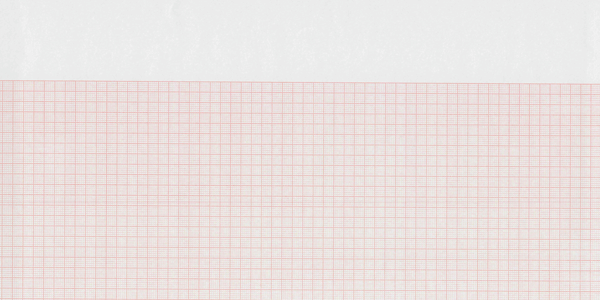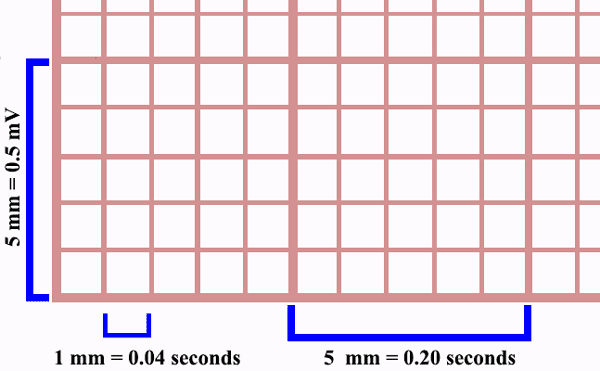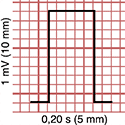The electrocardiogram (EKG) is the representation on paper of the electrical activity of the heart. This paper has certain essential characteristics for the correct reading of the EKG.
The electrocardiogram paper is a graph paper where for every five small (1 mm) squares you can find a heavier line forming a larger 5 mm square.

Electrocardiogram paper
The vertical axis measures the amplitude of the heart’s electrical current. It is measured in millivolts (mV). By standard, 10 mm in height equals 1 mV. Therefore each 1 mm square on the vertical axis equals 0.1 mV and each large square, 0.5 mV.
The horizontal axis measures time. On a standard EKG the paper speed is 25 mm/s. Therefore, each 1 mm square on the horizontal axis equals 0.04 s, and each large square, 0.20 s.

Electrocardiogram paper measures:
Vertical: 1 mm = 0.1 mV. Horizontal: 1 mm = 0.04 s.
These are the values used on a standard EKG. If needed, we can increase paper speed (to see wave abnormalities) or decrease it (to check for rhythm disorders); we can also increase the amplitude (if low voltage is present) or decrease it (when QRS complexes are too large).






